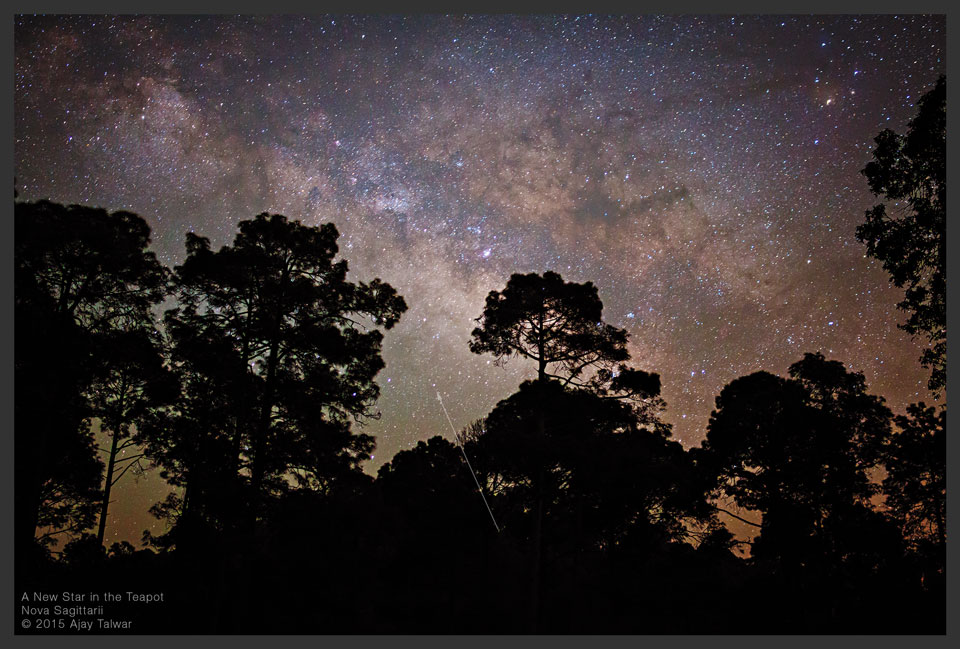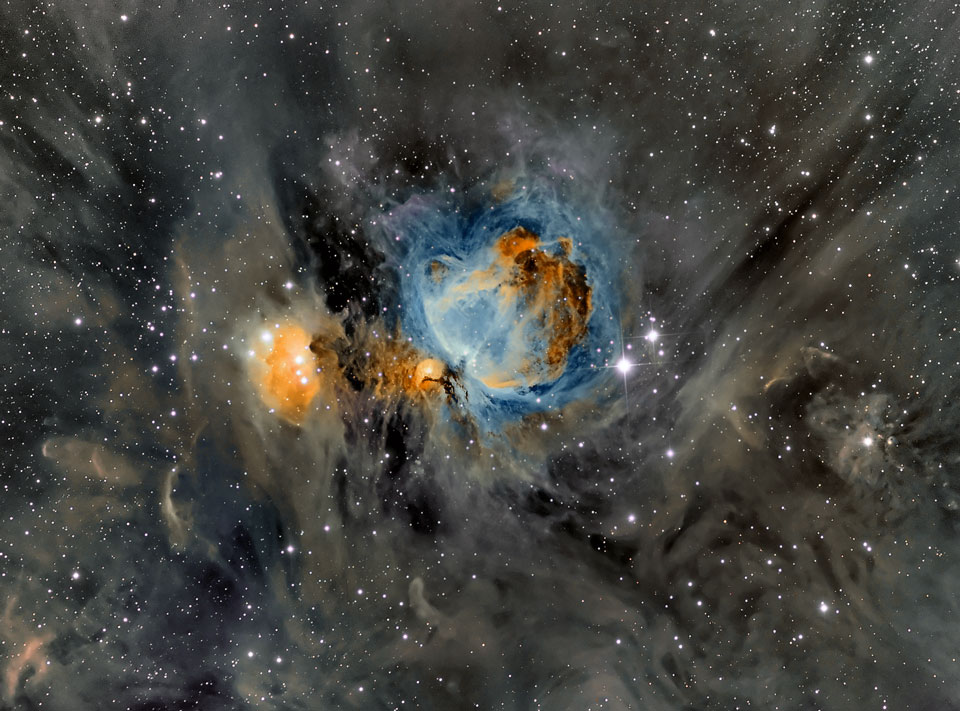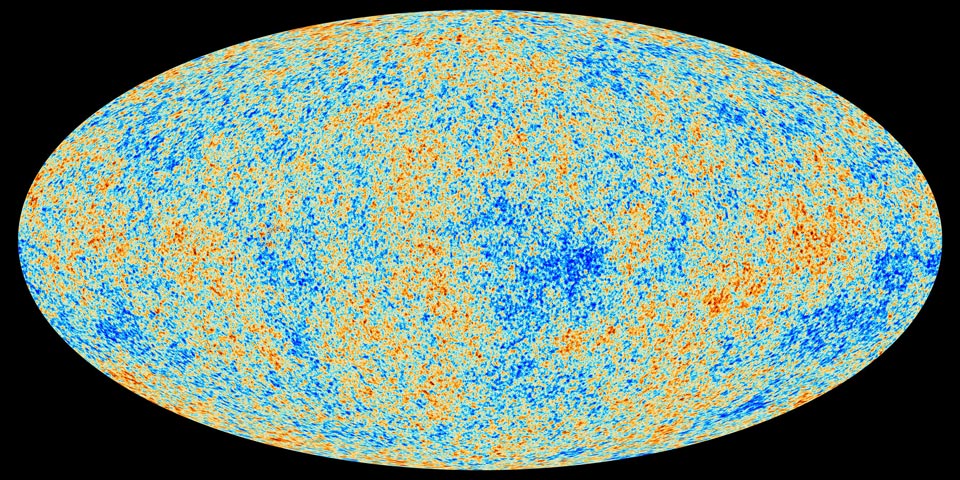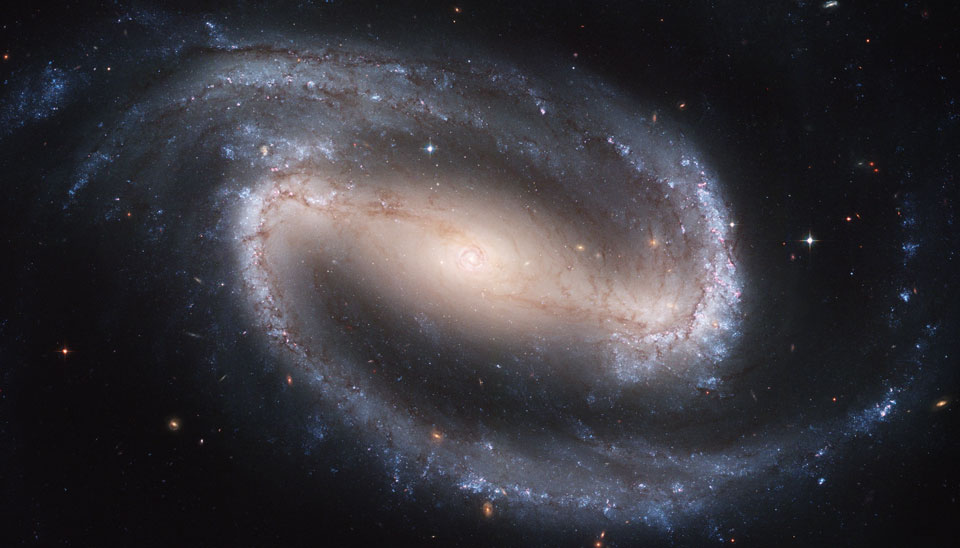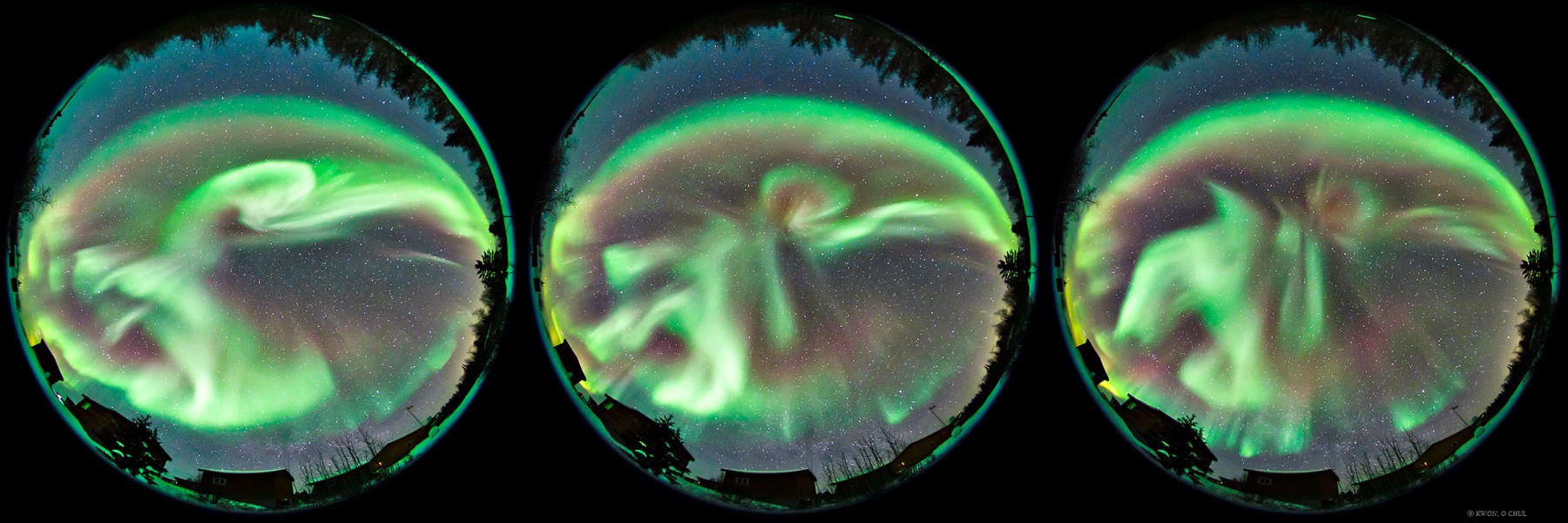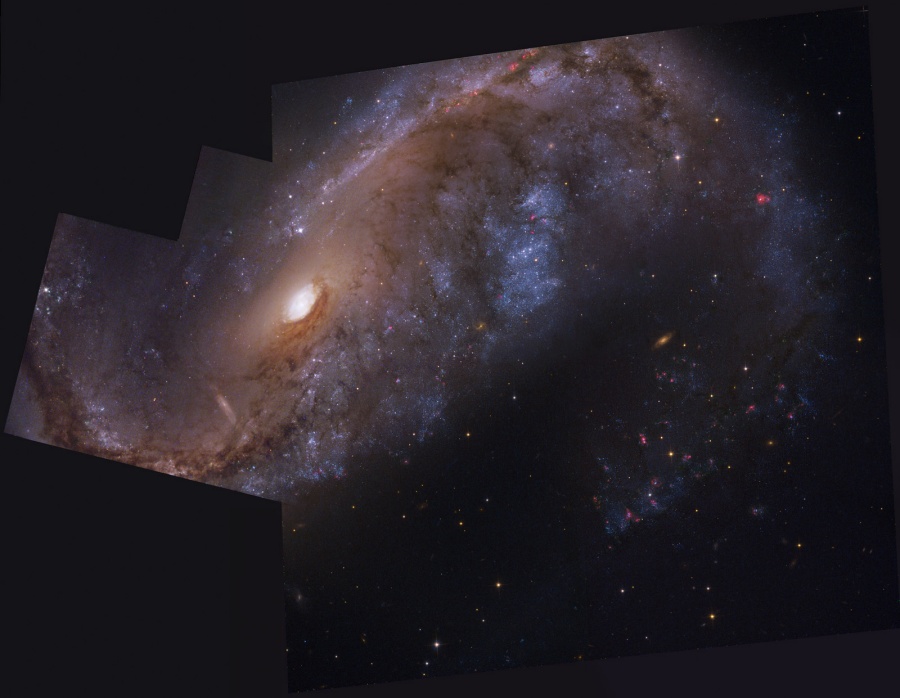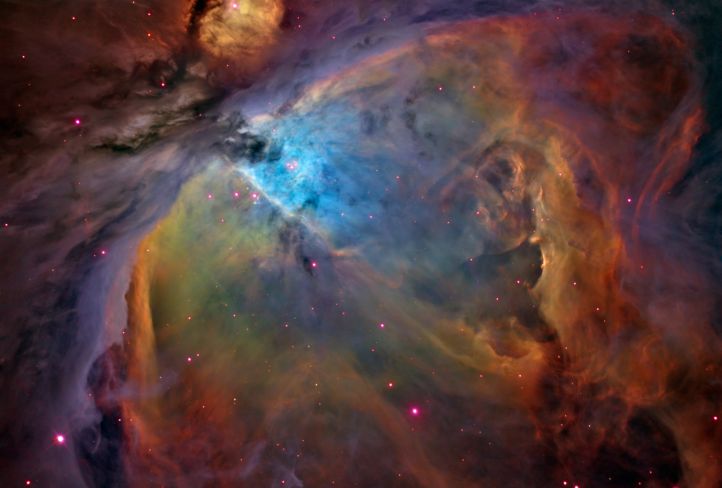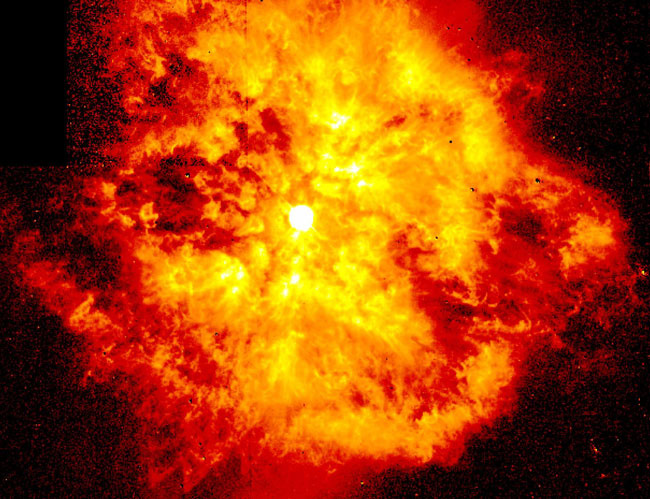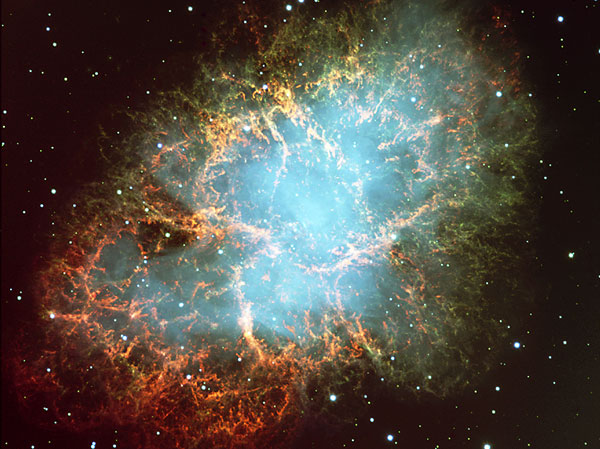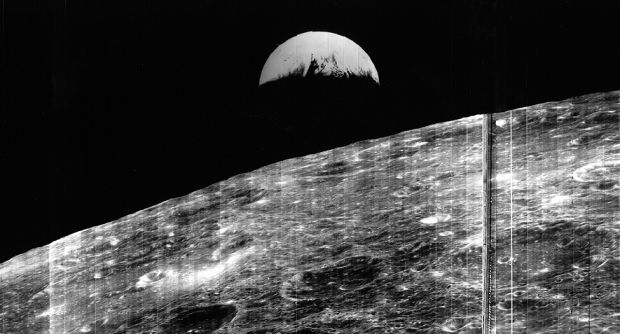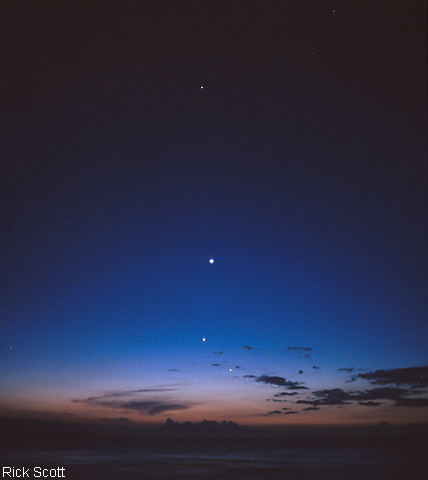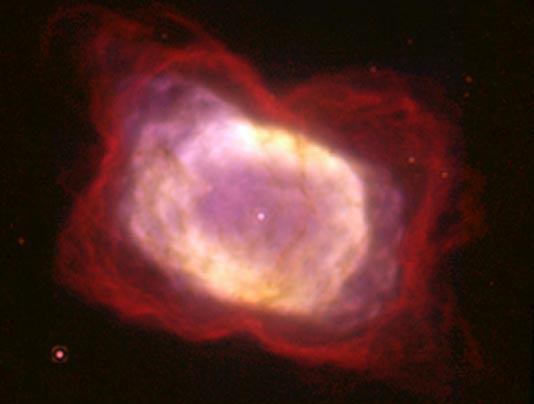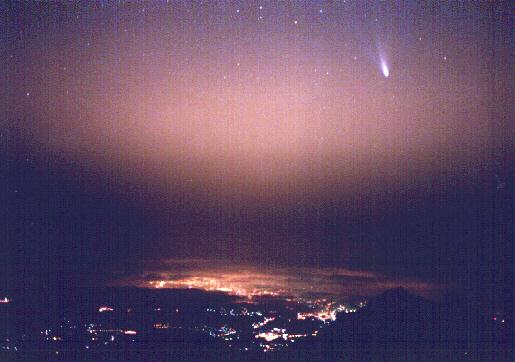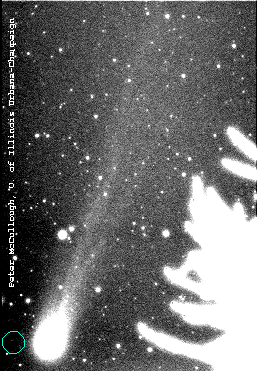| << Previous | Index | Next >> |
2015 It quickly went from obscurity to one of the brighter stars in Sagittarius -- but it's fading. Named Nova Sagittarii 2015 No. 2, the stellar explosion is the brightest nova visible from Earth in over a year. The featured image was captured four days ago from Ranikhet in the Indian Himalayas. Several stars in western Sagittarius make an asterism known as the Teapot, and the nova, indicated by the arrow, now appears like a new emblem on the side of the pot. As of last night, Nova Sag has faded from brighter than visual magnitude 5 to the edge of unaided visibility. Even so, the nova should still be easily findable with binoculars in dark skies before sunrise over the next week.
2014 What surrounds a hotbed of star formation? In the case of the Orion Nebula -- dust. The entire Orion field, located about 1600 light years away, is inundated with intricate and picturesque filaments of dust. Opaque to visible light, dust is created in the outer atmosphere of massive cool stars and expelled by a strong outer wind of particles. The Trapezium and other forming star clusters are embedded in the nebula. The intricate filaments of dust surrounding M42 and M43 appear gray in the above image, while central glowing gas is highlighted in brown and blue. Over the next few million years much of Orion's dust will be slowly destroyed by the very stars now being formed, or dispersed into the Galaxy.
2013 What is our universe made of? To help find out, ESA launched the Planck satellite to map, in unprecedented detail, slight temperature differences on the oldest surface known -- the background sky left billions of years ago when our universe first became transparent to light. Visible in all directions, this cosmic microwave background is a complex tapestry that could only show the hot and cold patterns observed were the universe to be composed of specific types of energy that evolved in specific ways. The results, reported last week, confirm again that most of our universe is mostly composed of mysterious and unfamiliar dark energy, and that even most of the remaining matter energy is strangely dark. Additionally, Planck data impressively peg the age of the universe at about 13.81 billion years, slightly older than that estimated by various other means including NASA's WMAP satellite, and the expansion rate at 67.3 (+/- 1.2) km/sec/Mpc, slightly lower than previous estimates. Some features of the above sky map remain unknown, such as why the temperature fluctuations seem to be slightly greater on one half of the sky than the other.
2012 Big, beautiful, barred spiral galaxy NGC 1300 lies some 70 million light-years away on the banks of the constellation Eridanus. This Hubble Space Telescope composite view of the gorgeous island universe is one of the largest Hubble images ever made of a complete galaxy. NGC 1300 spans over 100,000 light-years and the Hubble image reveals striking details of the galaxy's dominant central bar and majestic spiral arms. In fact, on close inspection the nucleus of this classic barred spiral itself shows a remarkable region of spiral structure about 3,000 light-years across. Unlike other spiral galaxies, including our own Milky Way, NGC 1300 is not presently known to have a massive central black hole.
2011 Intense auroral activity flooded the night with shimmering colors on February 24, captured here from a lodge near the city of Yellowknife in northern Canada. The stunning sequence (left to right) of three all-sky exposures, taken at 30 second intervals, shows rapid changes in dancing curtains of northern lights against a starry background. What makes the northern lights dance? Measurements by NASA's fleet of THEMIS spacecraft indicate that these explosions of auroral activity are driven by sudden releases of energy in the Earth's magnetosphere called magnetic reconnection events. The reconnection events release energy when magnetic field lines snap like rubber bands, driving charged particles into the upper atmosphere. Stretching into space, these reconnection events occur in the magnetosphere on the Earth's night side at a distance about 1/3 of the way to the Moon.
2010 Distorted galaxy NGC 2442 can be found in the southern constellation of the flying fish, (Piscis) Volans. Located about 50 million light-years away, the galaxy's two spiral arms extending from a pronounced central bar have a hook-like appearance in wide-field images. But this mosaicked close-up, constructed from Hubble Space Telescope data, follows the galaxy's structure in amazing detail. Obscuring dust lanes, young blue star clusters and reddish star forming regions surround a core of yellowish light from an older population of stars. The sharp Hubble data also reveal more distant background galaxies seen right through NGC 2442's star clusters and nebulae. The image spans about 75,000 light-years at the estimated distance of NGC 2442.
2009 A newly discovered object in the outer Solar System moves like an anti-Pluto. 90482 Orcus was first discovered in 2004 and is slightly smaller than Pluto, although still one of the largest Kuiper belt objects known. Orcus may one day have the same IAU designation as Pluto: a dwarf planet. Orcus and Pluto have similar orbits: each achieves nearly the same maximum and minimum distances from the Sun, each orbits on a similarly shaped ellipse, and each orbital ellipse is tilted toward the other planets' orbital ellipse by roughly the same angle. The great mass of Neptune causes each to circle the Sun twice for every three Neptune orbits. Orcus is like an anti-Pluto, however, because the two objects always remain across the Solar System from each other. Orcus can be found as the spot near the center of these discovery frames moving slightly down from the top. Until the end of next week, the discoverers of Orcus ask for your help in naming its newly discovered moon.
2008 On the left, surrounded by blue spiral arms, is spiral galaxy M81. On the right marked by red gas and dust clouds, is irregular galaxy M82. This stunning vista shows these two mammoth galaxies locked in gravitational combat, as they have been for the past billion years. The gravity from each galaxy dramatically affects the other during each hundred million-year pass. Last go-round, M82's gravity likely raised density waves rippling around M81, resulting in the richness of M81's spiral arms. But M81 left M82 with violent star forming regions and colliding gas clouds so energetic the galaxy glows in X-rays. In a few billion years only one galaxy will remain.
2007 Welcome to Planet Earth, the third planet from a star named the Sun. The Earth is shaped like a sphere and composed mostly of rock. Over 70 percent of the Earth's surface is water. The planet has a relatively thin atmosphere composed mostly of nitrogen and oxygen. The above picture of Earth, dubbed Blue Marble, was taken from Apollo 17 in 1972 and features Africa and Antarctica. It is thought to be one of the most widely distributed photographs of any kind. Earth has a single large Moon that is about 1/4 of its diameter and, from the planet's surface, is seen to have almost exactly the same angular size as the Sun. With its abundance of liquid water, Earth supports a large variety of life forms, including potentially intelligent species such as dolphins and humans. Please enjoy your stay on Planet Earth.
2006 Astronomical spring came to planet Earth's northern hemisphere this week (and autumn to the south) with the equinox on March 20th. But on Mars, northern spring began on January 22nd. Still in northern springtime, the Red Planet currently has a similar appearance to this composite of images from previous years taken by the long-lasting Mars Global Surveyor spacecraft. The sprawling dark region near picture center is Syrtis Major, with the whitish Hellas impact basin just below, in the southern hemisphere. The four seasons on Earth each last about 90 earth days, while Mars' larger and more eccentric elliptical orbit results in seasons that are longer and vary more widely in length - from about 140 to 190 martian sols.
2005
2004 Look up into the sky tonight, and even with a good telescope you won't come across a sight quite like this one. It is a familiar object though, the grand stellar nursery known as the Orion Nebula. But the striking picture combines images taken through three separate filters, each designed to record different emission lines - light from Sulfur, Oxygen, and Hydrogen atoms glowing in the tenuous nebular gas. At such low densities, Sulfur and Hydrogen atoms emit red colors while Oxygen glows green. To distinguish their contributions in the final image, Sulfur was assigned to red, Hydrogen to green, and Oxygen to blue, a color scheme used in mapped-color images of other astronomical nebulae as well. While the result is very different from what the eye might see, the image is still both beautiful and scientifically valuable, tracing elements and conditions within the nearby star forming region.
2003 Why would a gamma ray burst fade so slowly? This behavior, recorded last October, is considered a new clue into the cause of gamma-ray bursts, the most powerful explosions known in the universe. The burst, first detected by the orbiting HETE satellite and later tracked by numerous ground-based telescopes, showed an unusually slow and tumultuous decay in visible light. Speculations on the cause of the unusual light curve include a blast wave striking a windy circumburst medium, a blast wave energetically refreshed by a faster outgoing shock, and non-uniformity in a fast moving jet. Pictured above is the massive Wolf-Rayet star WR124, a star itself undergoing a slow explosion by producing a very powerful but tumultuous wind. Popular candidate progenitor sources for GRBs include supernova or hypernova explosions from massive stars, possibly ones with similarities to Wolf-Rayet stars.
2002 Is there a monster in IC 1396? Known to some as the Elephant's Trunk Nebula, parts of gas and dust clouds of this star formation region may appear to take on foreboding forms, some nearly human. The only real monster here, however, is a bright young star too far from Earth to hurt us. Energetic light from this star is eating away the dust of the dark cometary globule near the top of the above image. Jets and winds of particles emitted from this star are also pushing away ambient gas and dust. Nearly 3,000 light-years distant, the relatively faint IC 1396 complex covers a much larger region on the sky than shown here, with an apparent width of more than 10 full moons.
2001 The Crab Nebula, filled with mysterious filaments, is the result of a star that was seen to explode in 1054 AD. This spectacular supernova explosion was recorded by Chinese and (quite probably) Anasazi Indian astronomers. The filaments are mysterious because they appear to have less mass than expelled in the original supernova and higher speed than expected from a free explosion. In the above picture taken recently from a Very Large Telescope, the color indicates what is happening to the electrons in different parts of the Crab Nebula. Red indicates the electrons are recombining with protons to form neutral hydrogen, while blue indicates the electrons are whirling around the magnetic field of the inner nebula. In the nebula's very center lies a pulsar: a neutron star rotating, in this case, 30 times a second.
2000 The Lunar Orbiter 1 spacecraft was launched in 1966 to map the lunar surface in preparation for the Apollo moon landings. NASA's plucky robotic explorer performed its job well and pioneered this classic view of the Earth poised above the lunar horizon. The first humans to directly witness a similar scene were the Apollo 8 astronauts. As they orbited the Moon in December of 1968 they also recorded Earth rise in a photograph that was to become one of the most famous images in history - a moving portrait of our world from deep space.
1999 This March stargazers have been treated to eye-catching formations of bright planets in western evening skies. On March 3rd, looking toward a beautiful sunset from a beach on the Hawaiian isle of Maui, photographer Rick Scott recorded this fleeting, four-planet "hockey stick" array. Mercury, closest to the horizon and immersed in fading sunlight, is easily visible between silhouetted clouds. To the left and up in the deepening blue is Jupiter with a brilliant Venus above and Saturn shining in the darkened sky near the top of the image. The planets are seen to lie close to the ecliptic - the apparent path of the sun - which is nearly perpendicular to the horizon for Hawaiian latitudes at this time of year.
1998 NGC 7027 is one of the smallest known planetary nebulae. Even so, NGC 7027 is 14,000 times larger than the Earth-Sun distance. Planetary nebula are so named because the first few discovered appeared similar to planets. Planetary nebula are actually dying stars, though, that have recently run out of nuclear fuel. The outer gaseous shells are expelled by an unknown process, frequently creating spectacular displays. In the above picture in infrared light, the hot central star is visible. Our Sun will become a planetary nebula in about 5 billion years.
1997 A comet as bright as Comet Hale-Bopp is very rare indeed. No comet has emitted or reflected this much light since possibly the Great Comet of 1811. However, since Comet Hale-Bopp is across the inner Solar System from us, it does not appear as bright as Comet West did in 1975. The Great Comet of 1996, Comet Hyakutake, was relatively dim but also appeared bright since it passed close to the Earth. Above, Comet Hale-Bopp was photographed high over the town of Las Palmas of the Spanish Canary Islands, on March 11th.
1996 This picture of Comet Hyakutake taken the night of March 21/22 in Illinois, USA shows the enormous tail that has already developed. The silhouette on the right is a foreground tree, and the superposed green circle on the left shows the size of the full moon. Today Comet Hyakutake makes its closest approach to the Earth. As the comet moves into the inner Solar System, it will pass the Earth at about 40 times the distance of our Moon. This is not the closest a comet has ever come, though. As recently as 1983 Comet IRAS-Araki-Alcock came three times closer than Hyakutake, and in 1770 Comet Lexell got yet twice closer than that! Asteroids - usually less massive than comets - frequently whiz by inside the Moon's orbit, with four doing so far in this decade. In the distant past, asteroids have even struck the Earth. Comet Hyakutake is much brighter now than Comet IRAS-Araki-Alcock ever got, and in fact is the brightest since Comet West in 1976. Comet Hyakutake will be easily visible all week.
| << Previous | Index | Next >> |
